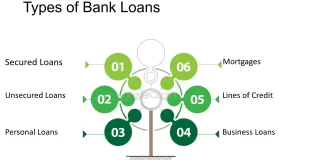Cryptocurrency investing has captured the attention of financial markets and individual investors alike. The allure of high returns, the potential for technological innovation, and the decentralized nature of cryptocurrencies make them an appealing asset class. This comprehensive guide will explore the latest trends and strategies in investing in cryptocurrencies like Bitcoin, Ethereum, and other altcoins, providing insights into how to navigate this dynamic and volatile market.
Introduction to Cryptocurrency Investing
Cryptocurrencies are digital or virtual currencies that use cryptography for security. The most well-known cryptocurrency, Bitcoin, was created in 2009 by an anonymous person or group of people known as Satoshi Nakamoto. Since then, thousands of cryptocurrencies have been developed, each with unique features and use cases.
Why Invest in Cryptocurrencies?
- High Return Potential: Cryptocurrencies have demonstrated the potential for significant returns. For instance, Bitcoin has seen exponential growth since its inception, and early investors in various altcoins have also experienced substantial profits.
- Diversification: Cryptocurrencies offer an opportunity to diversify investment portfolios. As they often have low correlation with traditional asset classes like stocks and bonds, they can help spread risk.
- Technological Innovation: Many cryptocurrencies are based on blockchain technology, which has a wide range of applications beyond digital currencies. Investing in cryptocurrencies can also be seen as investing in the future of technology.
- Decentralization: Cryptocurrencies operate on decentralized networks, reducing the influence of central banks and governments. This appeals to those who seek financial sovereignty and privacy.
Latest Trends in Cryptocurrency Investing
- Decentralized Finance (DeFi)
Decentralized Finance, commonly referred to as DeFi, represents a burgeoning sector within the blockchain and cryptocurrency space that seeks to recreate and improve upon traditional financial systems through decentralized technologies. By utilizing smart contracts on blockchain networks, DeFi platforms offer financial services without the need for intermediaries like banks or brokers. This article explores the fundamentals of DeFi, its core components, benefits, challenges, and future prospects.
Core Components of DeFi
DeFi encompasses a wide range of financial services that operate on decentralized networks, primarily Ethereum. Here are the key components:
- Decentralized Exchanges (DEXs):
- Function: Facilitate peer-to-peer trading of cryptocurrencies without intermediaries.
- Examples: Uniswap, SushiSwap, and Curve Finance.
- Mechanism: Use smart contracts to match trades directly between users, often employing automated market makers (AMMs) to provide liquidity.
- Lending and Borrowing Platforms:
- Function: Enable users to lend their assets to earn interest or borrow assets by providing collateral.
- Examples: Aave, Compound, and MakerDAO.
- Mechanism: Use smart contracts to lock collateral and manage loans, often dynamically adjusting interest rates based on supply and demand.
- Stablecoins:
- Function: Cryptocurrencies designed to maintain a stable value, usually pegged to a fiat currency like the US dollar.
- Examples: DAI, USDC, and Tether (USDT).
- Mechanism: Achieve stability through collateralization, algorithmic adjustments, or a combination of both.
- Yield Farming and Liquidity Mining:
- Function: Allow users to earn rewards by providing liquidity to DeFi protocols.
- Examples: Yearn.finance, SushiSwap’s liquidity pools.
- Mechanism: Distribute governance tokens or other rewards to users who stake their assets in liquidity pools.
- Insurance:
- Function: Provide coverage for various risks in the DeFi ecosystem.
- Examples: Nexus Mutual, Cover Protocol.
- Mechanism: Use smart contracts to pool funds and distribute payouts based on predefined conditions.
- Prediction Markets:
- Function: Allow users to bet on the outcome of future events.
- Examples: Augur, Gnosis.
- Mechanism: Use smart contracts to collect bets, hold funds, and distribute winnings based on event outcomes.
Benefits of DeFi
DeFi offers several advantages over traditional financial systems:
- Accessibility: DeFi platforms are accessible to anyone with an internet connection and a cryptocurrency wallet, eliminating barriers for the unbanked and underbanked populations.
- Transparency: All transactions and smart contract operations are recorded on the blockchain, providing a transparent and immutable ledger that enhances trust and accountability.
- Control and Ownership: Users retain control over their assets without relying on third-party custodians, reducing the risk of asset seizure or mismanagement.
- Innovation and Interoperability: DeFi protocols are highly modular and interoperable, allowing developers to create new financial products by combining existing protocols and services.
- Cost Efficiency: By eliminating intermediaries, DeFi can reduce transaction fees and improve the efficiency of financial services.
Challenges and Risks
Despite its potential, DeFi faces several challenges and risks:
- Security Vulnerabilities: Smart contracts are susceptible to bugs and exploits, which can lead to significant financial losses. High-profile hacks and security breaches have highlighted the need for robust security practices.
- Regulatory Uncertainty: DeFi operates in a legal gray area in many jurisdictions, raising concerns about regulatory crackdowns and compliance requirements.
- Scalability: Many DeFi platforms, particularly those on the Ethereum network, face scalability issues, leading to high transaction fees and slower processing times during periods of high demand.
- Complexity: The technical complexity and steep learning curve of DeFi can be a barrier to entry for average users, limiting broader adoption.
- Market Volatility: The volatility of cryptocurrencies can affect the stability of DeFi platforms, particularly those that rely on collateralized assets.
Future Prospects
The future of DeFi holds significant promise, driven by ongoing innovation and increasing adoption. Key areas of development include:
- Layer 2 Solutions: Implementing Layer 2 scaling solutions, such as rollups and sidechains, to improve transaction throughput and reduce costs on the Ethereum network.
- Cross-Chain Interoperability: Enhancing interoperability between different blockchain networks to facilitate seamless asset transfers and interactions across diverse DeFi platforms.
- Improved User Experience: Developing more user-friendly interfaces and educational resources to lower the barrier to entry and attract mainstream users.
- Enhanced Security: Implementing advanced security measures, such as formal verification of smart contracts and decentralized insurance mechanisms, to mitigate risks.
- Regulatory Clarity: Engaging with regulators to establish clear guidelines and frameworks that support innovation while protecting consumers.
Decentralized Finance is revolutionizing the financial landscape by offering innovative, accessible, and transparent alternatives to traditional financial services. While it faces challenges related to security, regulation, and scalability, ongoing advancements and increasing adoption suggest a bright future for DeFi. As the ecosystem matures, it has the potential to democratize finance, empower individuals, and drive global economic inclusion.

- Non-Fungible Tokens (NFTs)
Non-Fungible Tokens (NFTs): A Comprehensive Guide
Introduction
Non-Fungible Tokens (NFTs) have emerged as a revolutionary concept in the digital world, transforming how we perceive ownership and value of digital assets. Unlike cryptocurrencies such as Bitcoin or Ethereum, which are fungible and can be exchanged on a one-to-one basis, NFTs represent unique assets that are not interchangeable. This article delves into the intricacies of NFTs, their applications, benefits, challenges, and future prospects.
What Are NFTs?
Definition:
- NFTs are digital assets that represent ownership or proof of authenticity of a unique item or piece of content, verified through blockchain technology.
Characteristics:
- Uniqueness: Each NFT has distinct information or attributes that make it unique.
- Indivisibility: NFTs cannot be divided into smaller units like cryptocurrencies.
- Ownership: The ownership of an NFT is recorded on a blockchain, providing verifiable proof of ownership.
How NFTs Work
NFTs are primarily built on blockchain platforms that support smart contracts, with Ethereum being the most common. The process involves:
- Minting: Creating a new NFT on a blockchain by encoding unique information about the asset.
- Smart Contracts: These self-executing contracts with the terms of the agreement directly written into code manage the creation, ownership transfer, and transaction of NFTs.
- Storage: The metadata and the actual digital asset can be stored on the blockchain or off-chain using decentralized storage solutions like IPFS (InterPlanetary File System).
Applications of NFTs
1. Digital Art:
- NFTs have revolutionized the art world by allowing artists to tokenize their work, providing a new avenue for selling and trading digital art. Famous NFT art platforms include OpenSea, Rarible, and Foundation.
2. Collectibles:
- Digital collectibles, such as CryptoKitties and NBA Top Shot moments, have gained immense popularity. These NFTs often have a limited supply, enhancing their scarcity and value.
3. Gaming:
- NFTs enable the creation and trading of in-game assets like weapons, skins, and virtual land. Games like Decentraland and Axie Infinity leverage NFTs to provide players with true ownership of their in-game assets.
4. Music and Entertainment:
- Musicians and content creators use NFTs to sell exclusive content, such as albums, concert tickets, and unique experiences. This model provides a new revenue stream and closer interaction with fans.
5. Real Estate:
- Virtual real estate in metaverse platforms can be bought, sold, and developed using NFTs. Platforms like Decentraland and The Sandbox allow users to own parcels of virtual land.
6. Intellectual Property and Royalties:
- NFTs can represent intellectual property rights, ensuring creators receive royalties each time their work is resold. Smart contracts automate royalty payments, ensuring transparency and fairness.
Benefits of NFTs
1. Provenance and Authenticity:
- Blockchain technology ensures that the ownership history and authenticity of NFTs can be traced back to their origin, reducing the risk of counterfeiting.
2. Ownership and Control:
- NFTs provide creators and owners with more control over their assets, including how they are used and monetized.
3. Financial Opportunities:
- NFTs open up new revenue streams for artists, musicians, gamers, and other creators by allowing them to monetize their digital assets directly.
4. Liquidity and Market Access:
- NFT marketplaces enable global access, allowing anyone to buy, sell, or trade NFTs, increasing liquidity and market participation.
Challenges and Criticisms
1. Environmental Concerns:
- The energy consumption of blockchain networks, particularly those using proof-of-work consensus like Ethereum, raises significant environmental concerns.
2. Market Speculation:
- The rapid growth and speculative nature of the NFT market have led to concerns about market bubbles and the sustainability of current valuations.
3. Intellectual Property Issues:
- The ease of creating and selling NFTs can lead to intellectual property disputes if digital assets are tokenized without proper authorization from the original creators.
4. Accessibility and Usability:
- Navigating NFT marketplaces and understanding blockchain technology can be complex for average users, posing a barrier to widespread adoption.
5. Security Risks:
- While blockchain technology itself is secure, the platforms and wallets used for NFTs can be vulnerable to hacks, scams, and phishing attacks.
Future Prospects
The future of NFTs is promising, with several key developments on the horizon:
1. Enhanced Blockchain Technology:
- The transition of Ethereum to Ethereum 2.0, with a proof-of-stake consensus mechanism, aims to reduce energy consumption and increase scalability, addressing some of the environmental and usability concerns.
2. Cross-Chain Interoperability:
- Efforts to enable NFTs to be transferred and used across different blockchain platforms will enhance their functionality and market reach.
3. Mainstream Adoption:
- As more industries recognize the potential of NFTs, we can expect broader adoption in areas like fashion, sports, education, and beyond.
4. Regulatory Frameworks:
- The development of clear regulatory guidelines will provide legal clarity and protection for NFT creators, buyers, and platforms, fostering a more stable and secure market environment.
5. Innovation in Use Cases:
- Continued innovation will likely lead to new and unexpected applications of NFTs, further integrating them into the digital economy and everyday life
Non-Fungible Tokens represent a transformative shift in how digital assets are created, owned, and traded. While challenges remain, the potential benefits of NFTs for creators, consumers, and industries are substantial. As technology evolves and adoption grows, NFTs are poised to play a significant role in the future digital economy, reshaping various aspects of our interactions with digital content and assets.
- Central Bank Digital Currencies (CBDCs)
Several countries are exploring or have already implemented CBDCs, which are digital versions of their national currencies. While CBDCs are not cryptocurrencies, their development signals increasing acceptance of digital currencies and may drive further adoption of cryptocurrencies.
- Institutional Adoption
Large financial institutions and corporations are increasingly investing in cryptocurrencies. Companies like Tesla, MicroStrategy, and Square have added Bitcoin to their balance sheets, and traditional financial services firms like PayPal and Fidelity are offering cryptocurrency-related services. This institutional interest adds credibility and liquidity to the cryptocurrency market.
- Regulatory Developments
Regulation is a significant factor in the cryptocurrency market. While some countries embrace cryptocurrencies, others impose stringent regulations or outright bans. Staying informed about regulatory developments is crucial for investors, as these can impact the market significantly.
Strategies for Investing in Cryptocurrencies
- Buy and Hold (HODL)
The buy-and-hold strategy involves purchasing cryptocurrencies and holding them for an extended period, regardless of market volatility. This strategy is based on the belief that the long-term trend of cryptocurrencies will be upward. Bitcoin and Ethereum are popular choices for this strategy due to their established presence and market dominance.
- Dollar-Cost Averaging (DCA)
DCA is a strategy where investors divide their total investment amount into periodic purchases of a particular cryptocurrency. This approach reduces the impact of volatility and removes the pressure of timing the market perfectly. For example, an investor might invest a fixed amount in Bitcoin every month.
- Trading
Active trading involves buying and selling cryptocurrencies to capitalize on market fluctuations. Traders use various techniques such as technical analysis, chart patterns, and market indicators to make informed decisions. Trading requires a deep understanding of the market and a high-risk tolerance.
- Staking and Yield Farming
Staking involves holding certain cryptocurrencies in a wallet to support the operations of a blockchain network in exchange for rewards. Yield farming, a DeFi strategy, involves lending or staking cryptocurrencies in DeFi protocols to earn interest or additional tokens. Both methods can generate passive income.
- Investing in ICOs and IDOs
Initial Coin Offerings (ICOs) and Initial DEX Offerings (IDOs) are fundraising methods used by new cryptocurrency projects. Investors can buy tokens at an early stage, potentially reaping significant rewards if the project succeeds. However, ICOs and IDOs are high-risk investments, as many projects fail to deliver on their promises.

- Diversification
Diversifying investments across different cryptocurrencies can spread risk. While Bitcoin and Ethereum are considered safer bets, smaller altcoins may offer higher growth potential. Balancing investments between established and emerging cryptocurrencies can optimize risk and reward.
Risks and Challenges in Cryptocurrency Investing
- Volatility
Cryptocurrencies are known for their extreme price volatility. Prices can surge or plummet rapidly, driven by market sentiment, news, regulatory changes, and technological developments. Investors must be prepared for significant fluctuations.
- Security Risks
The digital nature of cryptocurrencies makes them susceptible to hacking and fraud. Investors must take precautions such as using hardware wallets, enabling two-factor authentication, and being cautious of phishing attacks.
- Regulatory Uncertainty
Regulatory environments for cryptocurrencies vary widely across countries. Sudden regulatory changes can affect market prices and the ability to trade certain cryptocurrencies. Investors need to stay informed about legal developments in their regions.
- Lack of Consumer Protections
Unlike traditional financial systems, cryptocurrencies often lack consumer protections. If a cryptocurrency exchange fails or is hacked, there may be no recourse for recovering lost funds. Choosing reputable exchanges and secure storage solutions is critical.
- Market Manipulation
The relatively nascent and unregulated nature of cryptocurrency markets makes them susceptible to manipulation. Activities such as pump-and-dump schemes can create artificial price movements, impacting unsuspecting investors.
Future Outlook of Cryptocurrency Investing
The future of cryptocurrency investing is both promising and uncertain. As the market matures, we can expect increased regulatory clarity, technological advancements, and broader adoption. Here are some potential developments:
- Mainstream Adoption
As cryptocurrencies become more widely accepted for everyday transactions and institutional investments, their value and stability may increase. Partnerships with traditional financial institutions and integration into payment systems can drive mainstream adoption.
- Technological Innovations
Advancements in blockchain technology, such as Ethereum 2.0, which aims to improve scalability and efficiency, can enhance the functionality and appeal of cryptocurrencies. Interoperability solutions, enabling different blockchains to communicate, can also expand the use cases for cryptocurrencies.
- Regulatory Frameworks
Clear and supportive regulatory frameworks can provide legitimacy to the cryptocurrency market, encouraging more participants to invest. However, overly restrictive regulations could stifle innovation and hinder market growth.
- Environmental I
 mpact
mpact
The environmental impact of cryptocurrency mining, particularly Bitcoin, has been a topic of concern. Efforts to reduce the carbon footprint, such as transitioning to renewable energy sources and more energy-efficient consensus mechanisms, can address these issues and improve the sustainability of cryptocurrencies.
- New Use Cases
Beyond digital currencies, blockchain technology has applications in various sectors, including supply chain management, healthcare, finance, and voting systems. Innovations in these areas can drive demand for cryptocurrencies and related technologies.
Conclusion
Cryptocurrency investing offers exciting opportunities and significant risks. By understanding the latest trends, adopting informed strategies, and staying vigilant about potential challenges, investors can navigate this dynamic market. Whether you are a seasoned investor or a newcomer, the key to success in cryptocurrency investing lies in continuous learning, prudent risk management, and staying updated with the ever-evolving landscape. As with any investment, due diligence and a clear understanding of your financial goals are essential to making informed decisions in the world of cryptocurrencies.


